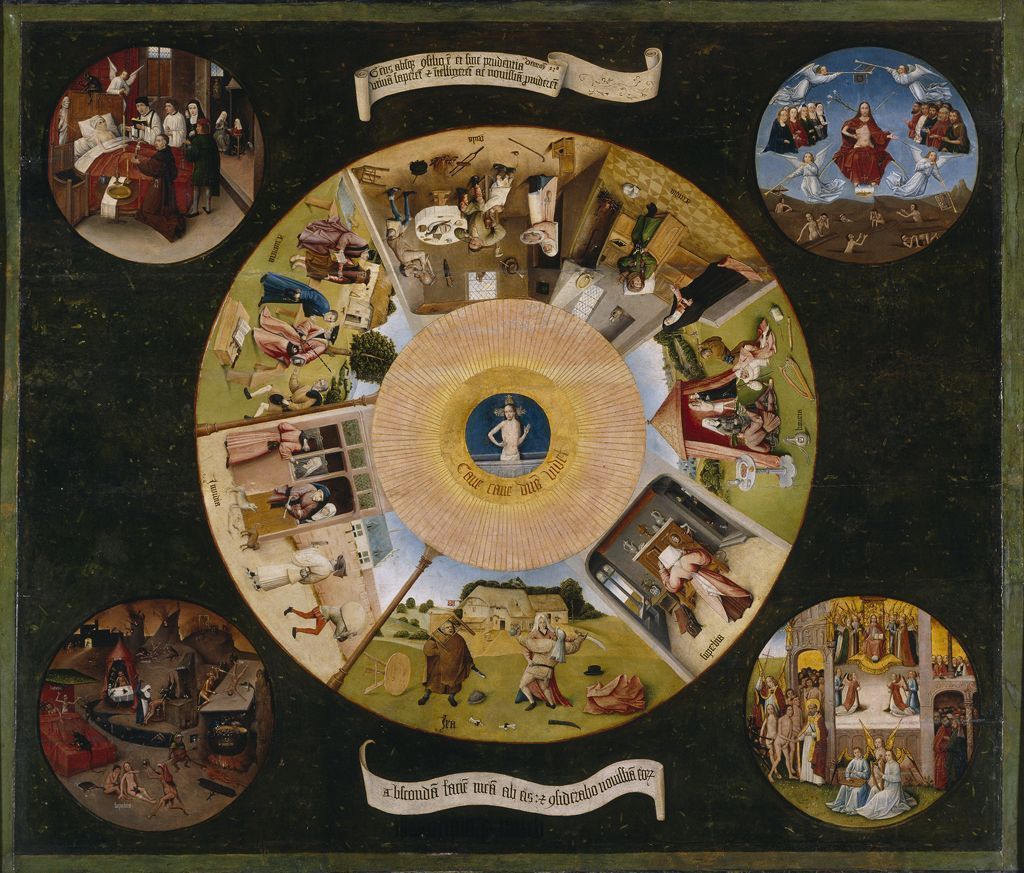In the novel Inferno by American author Dan Brown, the acronym Saligia refers to the seven deadly sins in Latin, namely: superbia, avaritia, luxuria, invidia, gula, ira, and acedia.
This code was created in the Middle Ages by the Catholic Church to warn the faithful of the danger of the seven deadly sins.
Also known as the capital vices or cardinal sins, the seven deadly sins are a classification of vices that has been used since early Christian times to educate and instruct Christians about fallen humanity’s tendency to sin.
They are classified as “deadly” not merely because they constitute serious moral offences, but also because they spur other sins and further immoral behaviour.
The Catholic Church divides sin into two categories: venial sins, in which guilt is relatively minor, and the more severe mortal sins. According to the Church, a deadly sin threatens one with eternal damnation.
The Seven Deadly Sins
A list of the seven deadly sins was created by Pope Gregory the Great (540 AD – 605 AD) and elaborated in the 13th century by the medieval theologian Tommaso d’Aquino in his best-known work the Summa Theologica. It was intended to be used as an instructional guide for theologians and a compendium of all of the main theological teachings of the Catholic Church.
The Seven Deadly sins are:
luxuria (lechery/lust)
gula (gluttony)
avaritia (avarice/greed)
acedia (sloth/discouragement)
ira (wrath)
invidia (envy)
superbia (pride)
The Italian poet Dante Alighieri describes human life as an intricate forest full of pitfalls and temptations to sin.
At the beginning of The Divine Comedy, Dante crosses the selva oscura (a dark forest) and comes upon three wild beasts, personifications of the seven deadly sins. The three beasts that terrify Dante are a leopard (Lust), a lion (Pride), and a wolf (Avarice), in line with the symbolism of medieval bestiaries.
The Modern Definitions of the Seven Deadly Sins
Lust: an intense desire. Lust could involve the intense desire for money, food, fame, power, or sex. In Dante’s Inferno, unforgiven lustful souls are blown about in restless hurricane-like winds symbolic of their own lack of self-control to their lustful passions in earthly life.
Gluttony: consuming too much of something that might be acceptable in moderation. Gluttony usually refers to food, but can also pertain to material goods. This sin can be interpreted as selfishness; essentially placing one’s own interests above the well-being or interests of others.
Greed: also known as avarice, the sin of greed is an excessive or rapacious desire for and pursuit of material possessions. In Dante’s Purgatory, penitents are bound and lay face down on the ground for having concentrated too much on earthly desires.
Sloth: refers to spiritual apathy and plain laziness. By the 17th century, this deadly sin referred to was believed to be the failure to utilize one’s talents and gifts. Sloth has also been defined as failing to do one’s duty.
Wrath: also known as “rage”, it may be described as inordinate and uncontrolled feelings of hatred and anger that often lead to violence. Wrath is the only sin not necessarily associated with selfishness or self-interest, although one can be wrathful for selfish reasons, such as jealousy (which is closely related to the sin of envy).
Envy: a desire for the possession of others, including both material goods and personal attributes. Dante defined this as “a desire to deprive other men of theirs.” In Dante’s Purgatory, the envious are punished by having their eyes sewn shut with wire because they sinfully took pleasure in seeing others humbled.
Pride: a feeling of superiority and an excessive belief in one’s own abilities. This is usually considered the worst of the sins and the source of the others. According to Christian tradition, pride is the sin of Lucifer, Adam, and Eve. Dante’s defined it as “love of self perverted to hatred and contempt for one’s neighbour.”
Picture by en.wikipedia.org









What is the latin name of the seven deadly sins?